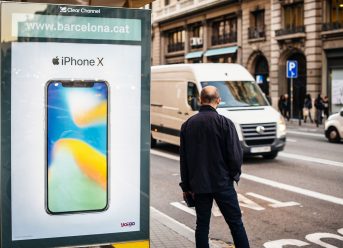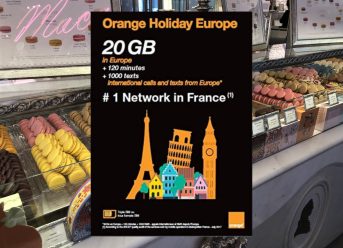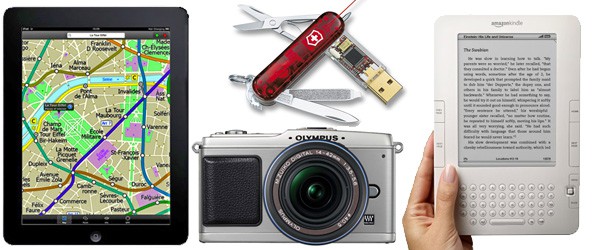
[Updated: December 29, 2016. Originally Posted: October 2011.]
There is no doubt that electronics play a huge part in our lives and electronics have become an essential part of travel. Between smartphones, tablets, digital cameras, laptops, and video cameras the choice of what electronics to bring on your backpacking trip can get overwhelming.
This guide will help clear up questions about how to safely use electronics in Europe and show you how to get the most out of your gadgets.
European Plug Adapters & Voltage Converters :: Free Wi-Fi :: Digital Cameras :: iPad/iPhone :: MP3 Players :: Laptop/Netbook :: USB Flash Drive
European Electronics Basics
Ther are two main difference between North American and European electronics — the voltage and the shape of the electrical plugs.
Let’s start with the voltage. America uses 110 volts and Europe uses a more powerful 220 volts. What does this mean? These days, not much because essentially all high-end electronics (laptops, smartphones, tablets, cameras/camera battery chargers, etc.) are designed to operate perfectly safely on anything from 100V-240V.
HOWEVER, more low-end electronics are not rated for a higher voltage so they will fry if you plug them into a European outlet. This includes things like hair dryers, curling irons, hair straighteners, some electric shavers, etc. A good rule of thumb is that anything that heats up (i.e. hair dryer) or has a motor will be damaged if you plug it in.
How to Check The Voltage of Your Electronics
Your electronics will display the voltage in which your device operates. It will be printed near the plug or on the power brick.
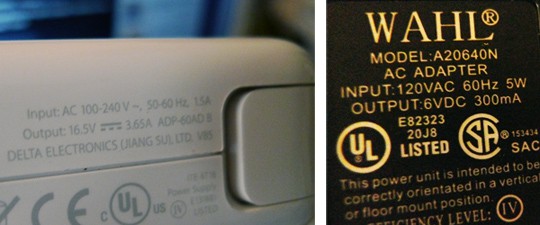
Left – This is the power brick on my Macbook. Is says “Input: AC 100-240V” — which means it will work on any voltage between 100-240V. Europe runs on 220V this device will work perfectly fine.
Right – This device (electric shaver) is rated 120V so it wouldn’t work in Europe.
Voltage Converter: You can buy a voltage converter that converts 220V to 110V but they are usually expensive, bulky, and heavy. The converters are also known to malfunction and fry your electronics anyways.
Special Note About Dual Voltage Appliances: You can buy a dual voltage hair dryer/hair straighteners that allow you to switch between two voltage settings, but they usually don’t work well. Often you’ll only get 50% of the power (i.e. it will take 25 minutes to dry your hair). It is better to just buy a cheap new hairdryer in Europe.
European Plug Adapters:
North America and Europe use different plug configurations (The UK has their own too).
You will need a plug adapter to be able to plug your electronics into European outlets. These adapters will NOT have any impact on voltage — they simply change the plug style so you can physically plug in your devices to an electrical socket.
Plug adapters are cheap via Amazon so it doesn’t hurt to pick two or three up before your trip.
WiFi In Europe
Free WiFi isn’t nearly as prevalent in Europe as it is in the US but more and more places are offering free WiFI. Most hostels and some hotels offer free wifi to their guests. There are a number of cafes that offer it for free. I believe you can get the internet at any McDonald’s or Starbucks if you buy something.
Basically, WiFi isn’t impossible to find but don’t expect to find it at a moment’s notice.
Digital Cameras For Europe
I’ve created a more in-depth guide to picking the perfect digital camera for traveling Europe.
Castles, architecture, stunning countryside, monuments, art, and beautiful people — there so many amazing things to take pictures of in Europe. I think a camera is one of the most important things you’ll bring with you. My photographs are my most cherished “souvenirs” from my travels. Here are a few things you’ll want to think about when choosing a camera for your European journey.
Smartphones
The smartphone has completely changed the way people travel. The things these devices can do are pretty amazing. You don’t even have to plan your trip ahead of time anymore. You can simply arrive at a new city and find great things to see within minutes (actually, it’s not that easy but it makes things easier). There are already many great apps available and this industry is still in its infancy.
More Reading [How to Use Smartphones and Data Plans Abroad]
Smartphone benefits include:
- Never Get Lost: Use GPS and/or GoogleMaps to guide you to your destination. This is huge. European cities are
 extremely complex and it’s really quite difficult to find a specific location. Most of the time you’re only given an address so finding it on a map can be a challenge. No longer will you have to waste tons of time trying to find something.
extremely complex and it’s really quite difficult to find a specific location. Most of the time you’re only given an address so finding it on a map can be a challenge. No longer will you have to waste tons of time trying to find something. - Subway Maps: Maps of every subway system can be downloaded so you won’t have to worry about getting on the wrong train. Also get live outage updates. However, a paper map is always nice to have.
- Restaurant Recommendations: Finding a place to eat is often a great cause of stress — especially when you’re on a budget. I use services like Yelp and it’s rarely let me down.
- Audio Tour Guides: There are many high-quality audio tour guides of
 most major European cities. This allows you to learn about the cities on your own time.
most major European cities. This allows you to learn about the cities on your own time. - Museum Tour Guides: Learn about the history of your favorite works of art at many famous museums without all that pesky reading.
- Digital Guide Books: Many major guidebooks can be downloaded straight to your mobile device. This allows to you pick and choose the chapters that are most interesting to you.
- Alternative Guide Books: There are many little restaurants/shops/attractions that only locals know about. It is easy to find these places online through your mobile device and then it is even simpler to get directions.
- Language Phrasebook Apps: Find out how to ask for a Big Mac, large fries, and a Coke in any language.
- Currency Converter: Find out exactly how much that souvenir t-shirt is going to cost.
- Cheap International Calls: Call your parents for cheap.
- Book Flights Online: Last minute travel plans? Easy.
- Replace Physical Books: No need to carry around heavy books because many are now available digitally.
- Music: I love having music with me when I travel. It really helps pass the time during long train/plane rides.
Laptops, Netbooks, and Tablets
I see more and more backpackers traveling with their laptops. Personally, I would never bring a big traditional laptop because they are heavy and they take up a lot of room. I might consider a netbook because they are much smaller/lighter. However, if you really want a computer I would get an iPad or some other tablet — without question.
Flash Drives & Portable Hard Drives
I like to put all my important information on a USB flash drive (flight info, a scan of passport, hostel confirmation info, important numbers, etc). I can then just throw it in my bag and forget about it. Many people now are opting to keep everything stored on the cloud as an extra layer of security. This is fine but you might not always have access to the internet.
- Guide To Using Smartphones, SIM Cards, and Data Plans In Europe - August 2, 2025
- Backpacking Europe Packing List — My Europe Travel Packing Guide - July 26, 2025
- The Best Travel Backpacks | In-Depth Buyer’s Guide & Backpack Reviews - July 5, 2025

No Funny Business
The Savvy Backpacker is reader-supported. That means when you buy products/services through links on the site, I may earn an affiliate commission—it doesn’t cost you anything extra and it helps support the site.
Thanks For Reading! — James
Questions? Learn more about our Strict Advertising Policy and How To Support Us.


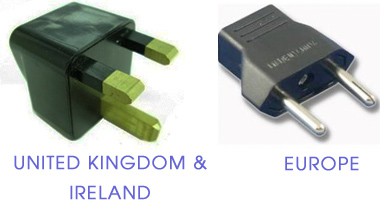
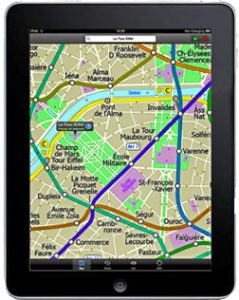 extremely complex and it’s really quite difficult to find a specific location. Most of the time you’re only given an address so finding it on a map can be a challenge. No longer will you have to waste tons of time trying to find something.
extremely complex and it’s really quite difficult to find a specific location. Most of the time you’re only given an address so finding it on a map can be a challenge. No longer will you have to waste tons of time trying to find something. most major European cities. This allows you to learn about the cities on your own time.
most major European cities. This allows you to learn about the cities on your own time.